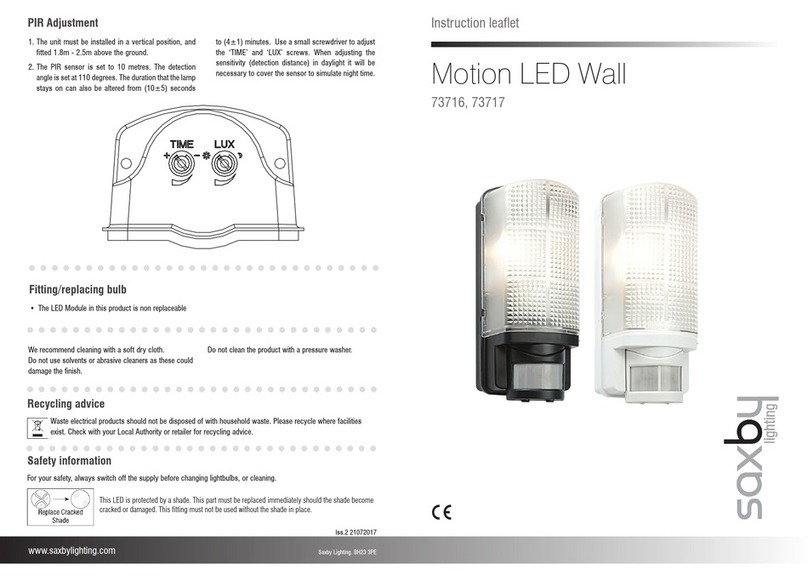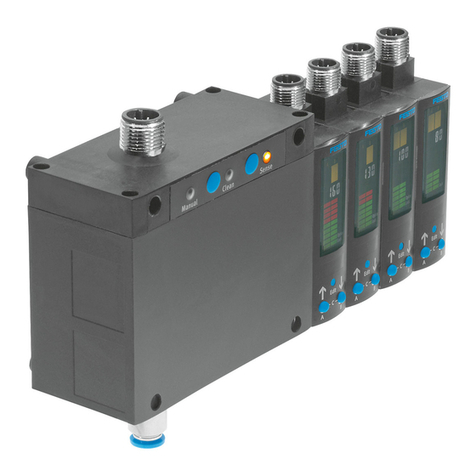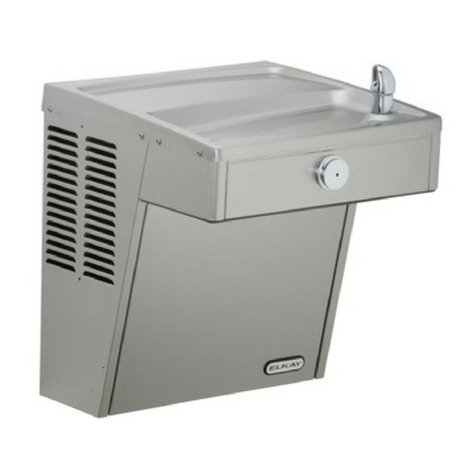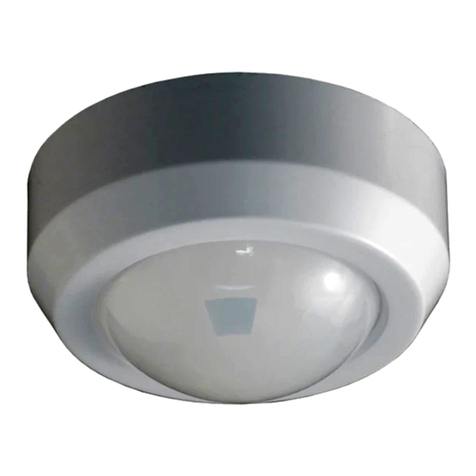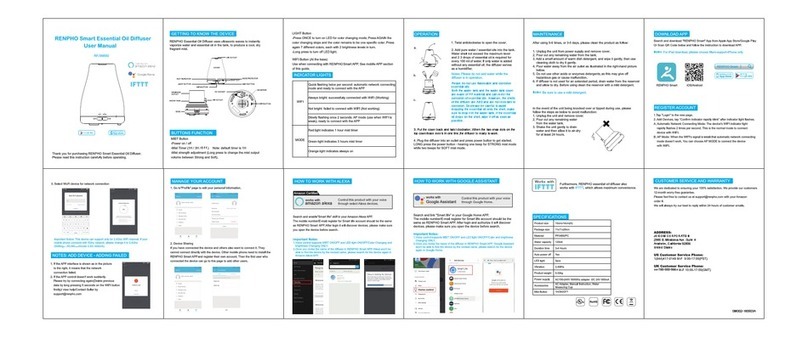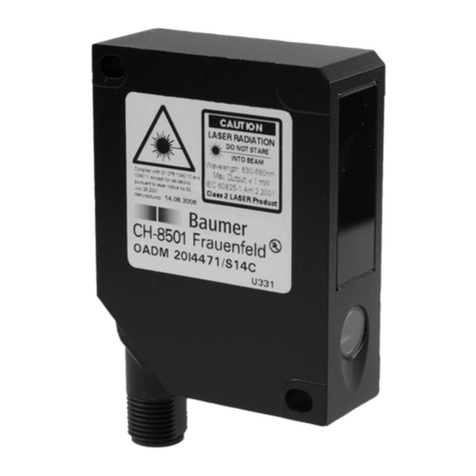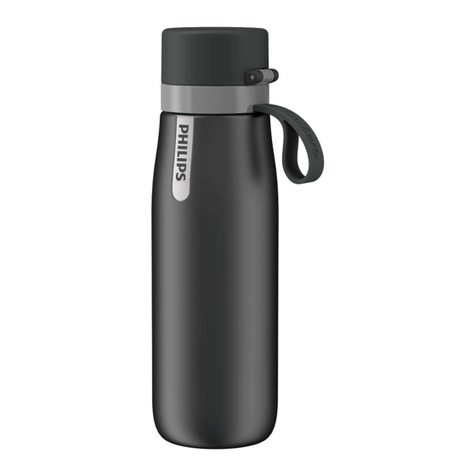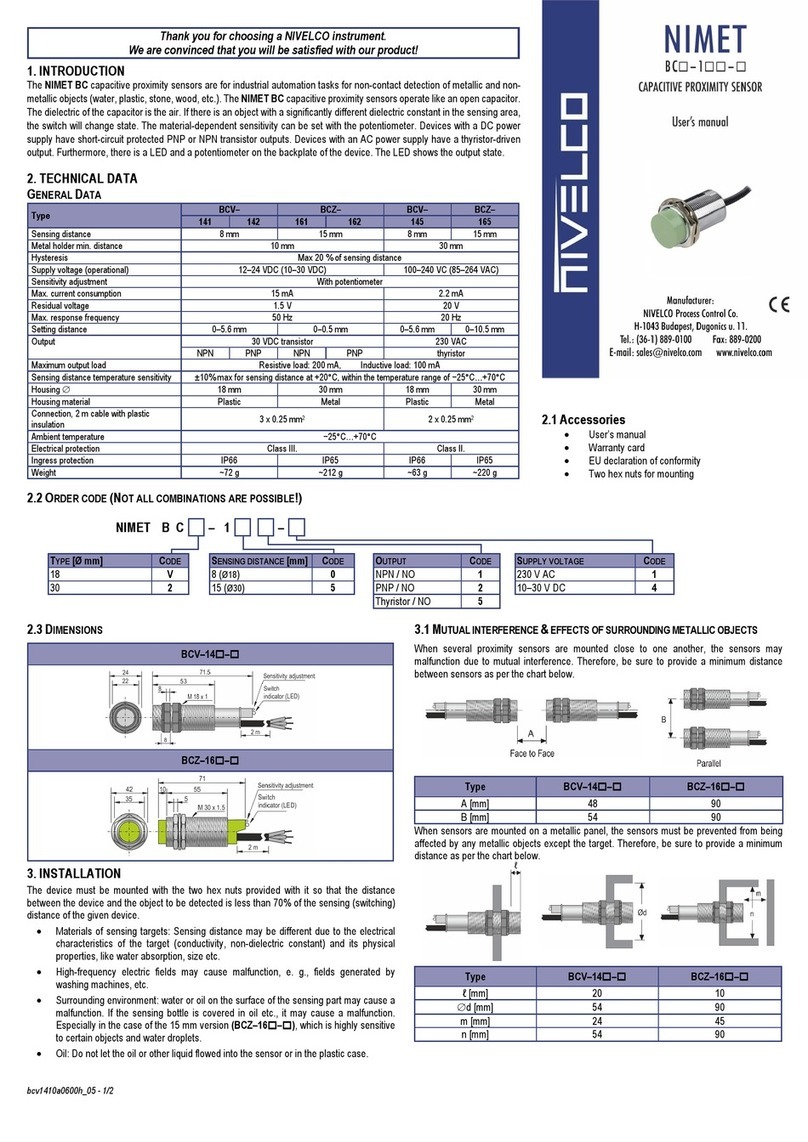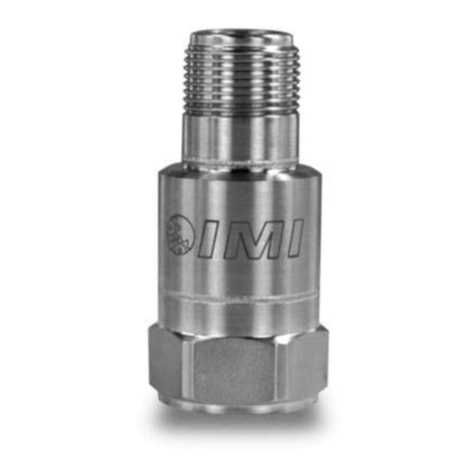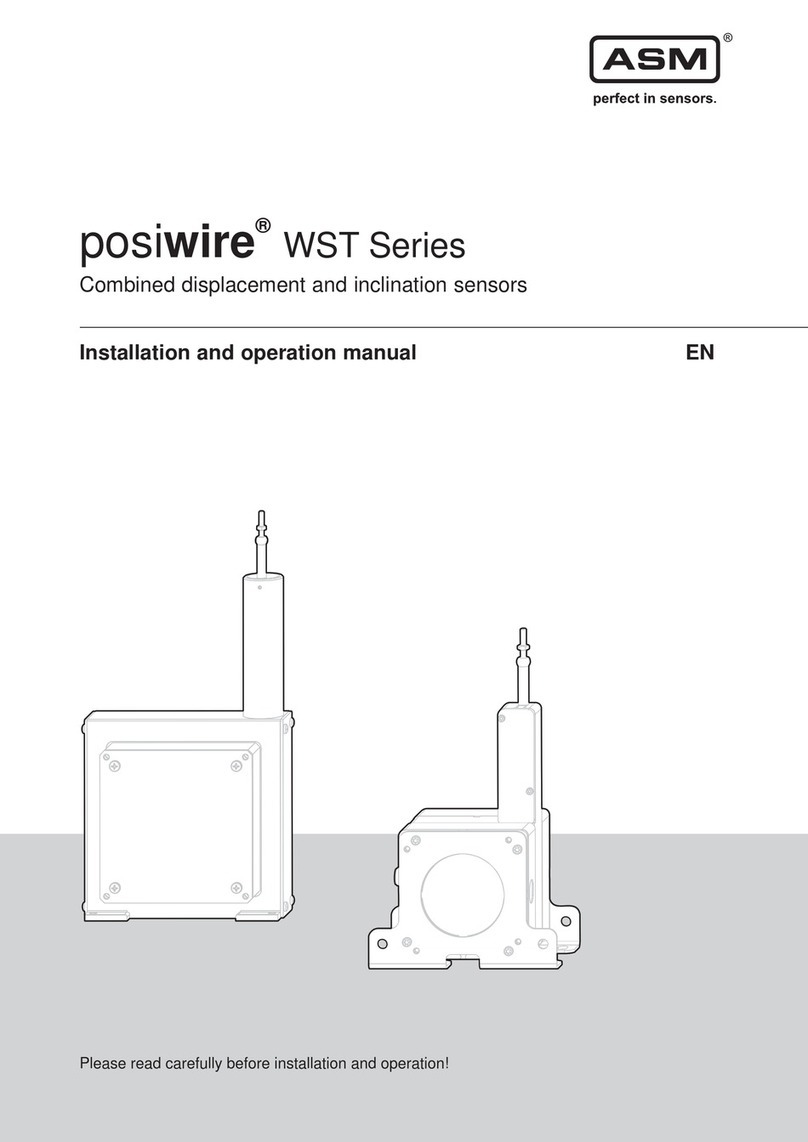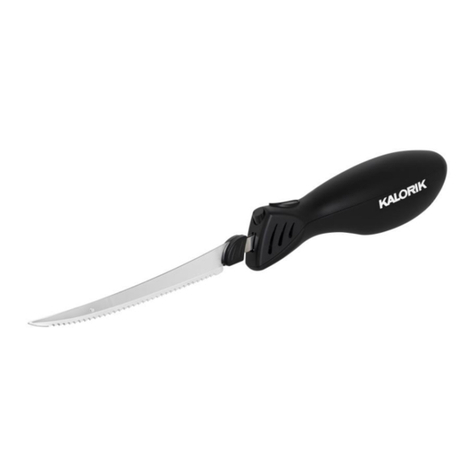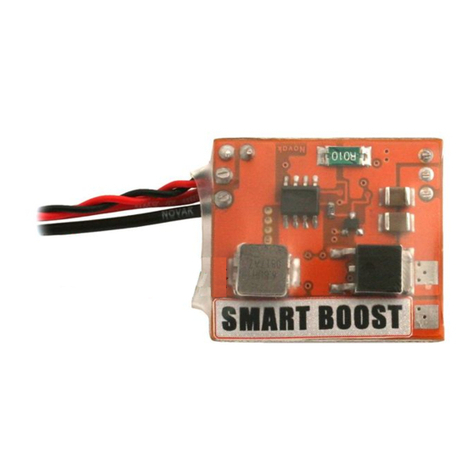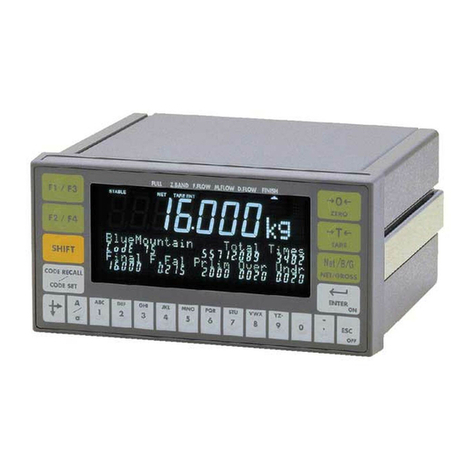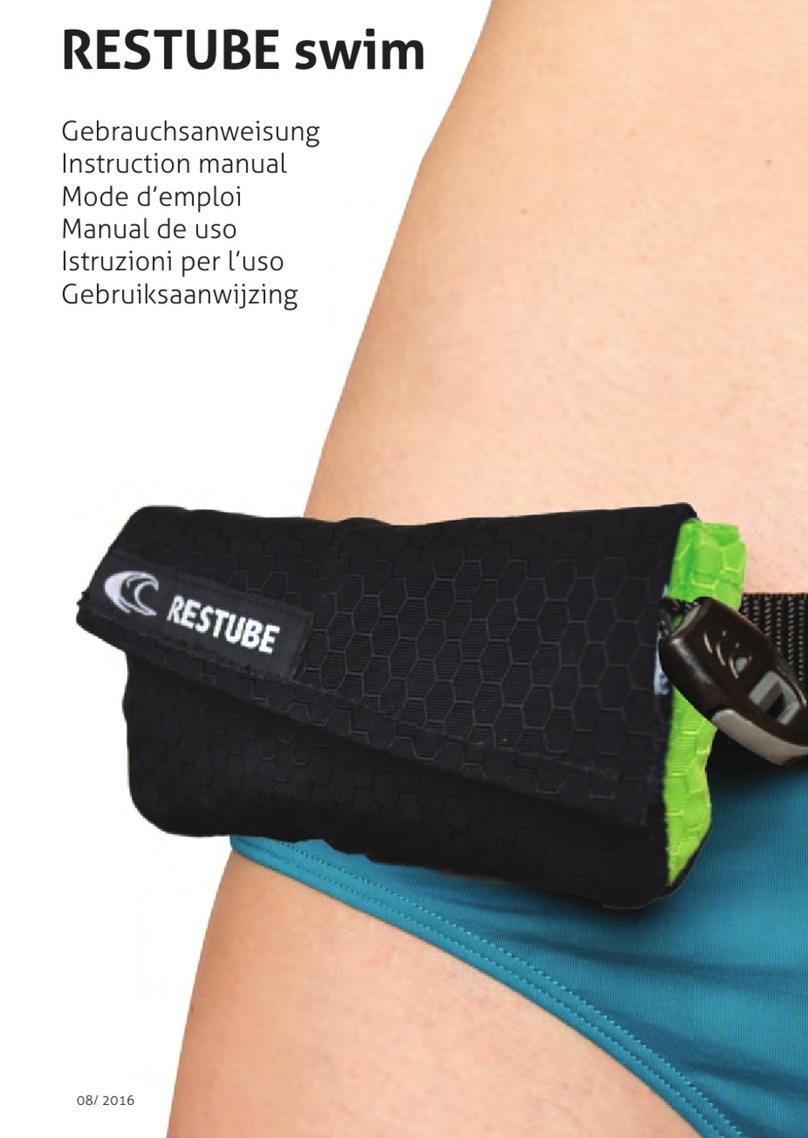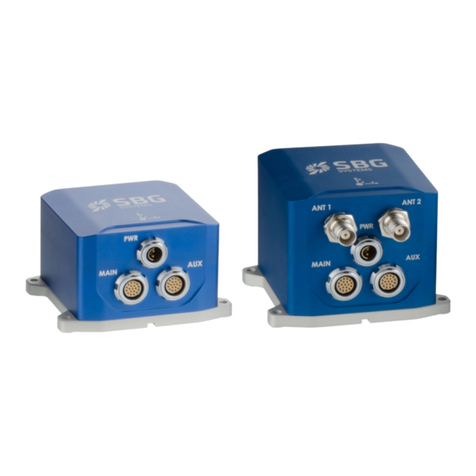biosignalsplux SENSPRO-ACC User manual

biosignal acquisition tool-kit for advanced research applications
Accelerometer (ACC) Sensor User Manual

Accelerometer (ACC)
User Manual
PLUX –Wireless Biosignals, S.A.
Av. 5 de Outubro, n. 70 –2.
1050-059 Lisbon, Portugal
http://biosignalsplux.com/
© 2019 PLUX
This information is provided "as is," and we make no express or implied warranties whatsoever with respect to functionality, operability, use, fitness for a
particular purpose, or infringement of rights. We expressly disclaim any liability whatsoever for any direct, indirect, consequential, incidental or special
damages, including, without limitation, lost revenues, lost profits, losses resulting from business interruption or loss of data, regardless of the form of action or
legal theory under which the liability may be asserted, even if advised of the possibility of such damages.
ATTENTION
Please read this datasheet before
using your biosignalsplux sensor
The information contained in this document has been carefully checked and were made every effort
to ensure its quality. PLUX reserves the right to make changes and improvements to this manual and
products referenced at any time without notice.
The word Bluetooth and its logo are trademarks of Bluetooth SIG Inc. and any use of such marks is
under license. Other trademarks are the property of their respective owners.
Please check your systems and sensors after receiving and before using it the first time to confirm if it
contains all the ordered sensors, accessories and other components. Contact our support via e-mail at
For regulatory information, please see the Regulatory Disclaimer at the end of this document.

Accelerometer (ACC)
User Manual
3 of 16
TABLE OF CONTENTS
1. General Information............................................................................................................. 4
1.1. General Description ........................................................................................................... 4
1.2. Typical Unfiltered Sensor Output........................................................................................ 4
1.3. Sensor Specifications ......................................................................................................... 5
1.4. Features ............................................................................................................................ 5
1.5. Applications....................................................................................................................... 5
1.6. Transfer Function (Conversion Formula)............................................................................. 5
1.7. Physical Characteristics...................................................................................................... 6
2. Application Notes..................................................................................................................... 7
3. Using the Accelerometer (ACC) Sensor with biosignalsplux & OpenSignals ................................. 8
3.1. Connecting the sensor to biosignalsplux Systems................................................................ 8
3.1.1. biosignalsplux 4-Channel Hubs............................................................................................. 8
3.1.2. biosignalsplux 8-Channel Hubs............................................................................................. 8
3.2. Configuring the Sensor in OpenSignals................................................................................ 9
3.2.1. OpenSignals (r)evolution (Windows, macOS, Linux) ............................................................ 9
4. Scientific Publications Using the SENS Sensor .......................................................................... 11
5. Safety & Maintenance ............................................................................................................ 12
5.1. Safety Instructions........................................................................................................... 12
5.2. Transportation and Storage.............................................................................................. 13
5.3. Cleaning .......................................................................................................................... 13
6. Ordering Guides, Regulatory & Legal Information.................................................................... 14
6.1. Ordering Guide................................................................................................................ 14
6.2. Guarantee of Quality & Warranty..................................................................................... 14
6.3. Warranty Voidance.......................................................................................................... 14
6.4. Contact & Support ........................................................................................................... 14
6.5. Regulatory Disclaimer...................................................................................................... 14
6.6. Document Version Tracking ..................................................... Error! Bookmark not defined.

Accelerometer (ACC)
User Manual
4 of 16
1. General Information
1.1. General Description
The biosignalsplux tri-axial Accelerometer (ACC) uses Micro-Electro-Mechanical Systems (MEMS®)
technology for the acquisition of high-quality accelerometery data. This sensor can measure sub-milliG
accelerations and provides raw data of each axis on individual channels, giving you full control about
the acquired data.
ACC sensors are commonly found in motion tracking applications where this sensor can be used for
the development of to measure physical activity, range of motion, as well as to conduct vibration
analysis, which, for example, can be used to prevent ergonomic injuries or evaluate tremors of
Parkinson patients.
Figure 1: biosignalsplux ACC sensor (standard version)
1.2. Typical Unfiltered Sensor Output
Figure 2 shows a typical unfiltered Accelerometer sensor output acquired while doing an 8 like
movement in order to stimulate all axis. The raw digital sensor values received from the biosignalsplux
device ranged between 0 and 2n-1 (n=sampling resolution) can be converted into the original unit of
measurement of this sensor (g) using the transfer function found in section Transfer Function
(Conversion Formula).
Figure 2: Typical unfiltered sensor output (doing an 8 like movement in order to stimulate all axis).

Accelerometer (ACC)
User Manual
5 of 16
1.3. Sensor Specifications
> Axis:
3
> Range:
±3.60 g
> Bandwidth:
0-50 Hz
> Consumption:
~0.35 mA
1.4. Features
>Tri-axial sensing
> Unobtrusive & lightweight sensor
>MEMS technology
> Pre-conditioned analog output
>High signal-to-noise ratio
> Ready-to-use and miniaturized form factor
> Medical-grade raw data output
> Raw data output
1.5. Applications
> Life sciences studies
> Biomedical device prototyping
> Activity monitoring
> Tilt detection
> Vibration measurement
> Human-Computer interaction
> Robotics & Cybernetics
> Biomechanics
1.6. Transfer Function (Conversion Formula)
The analog sensor signals acquired with biosignalsplux devices are converted into digital values ranged
between 0 and 2n-1 (n=sampling resolution, usually 8-bit or 16-bit) and streamed in the raw digital
format.
In most applications, the original physical unit of the acquired ACC signal is preferred or required. The
raw digital sensor samples can be converted back into relative gravitational acceleration/g-force (g)
using the following formula:
𝐴𝐶𝐶(𝑔)=𝐴𝐷𝐶 − 𝐶𝑚𝑖𝑛
𝐶𝑚𝑎𝑥 − 𝐶𝑚𝑖𝑛
× 2 − 1
(1)
Valid sensor range: [-3.60 g, 3.60 g]
with: 𝐴𝐶𝐶(𝑔)ACC value in g-force (g)
𝐴𝐷𝐶 Value samples from the sensor/channel (digital value)
𝐶𝑚𝑖𝑛 Minimum calibration value
1
𝐶𝑚𝑎𝑥 Maximum calibration value
1
For more information about 𝐶𝑚𝑖𝑛 and 𝐶𝑚𝑎𝑥, please, check the content of section 2. Application Notes.

Accelerometer (ACC)
User Manual
6 of 16
1.7. Physical Characteristics
> W1 x L1 x H1:
1.6cm x 2.2cm x 0.5cm
> W2:
1.0±0.1cm
> W3:
1.0±0.1cm
> W4:
0.5±0.1cm
> L2:
1.3±0.1cm
> L3:
0.7±0.1cm
> A1:
105.0±0.5cm
> A2:
8.5±0.5cm
> H2:
0.7±0.1cm
> S:
0.3±0.1cm
>Available sleeve colors:
White, Black, Blue, Green, Red, Yellow, Grey, and Brown
Figure 3: Physical characteristics of the standard ACC sensor.

Accelerometer (ACC)
User Manual
7 of 16
2. Application Notes
This sensor requires a calibration to provide reliable measurements. The resulting calibration values
(𝐶𝑚𝑖𝑛& 𝐶𝑚𝑎𝑥) which are needed for the transfer function below are determined by performing a very
slow 360° rotation of the sensor around each axis to force the accelerometer to cross the gravity-
imposed −1g and 1g.
𝐶𝑚𝑖𝑛& 𝐶𝑚𝑎𝑥 define the minimum and maximum RAW data values, respectively, registered in the axis
under analysis during the calibration protocol.
Axes/Channel Configuration
Figure 4: Relationship between each input cable and the respective axis under monitorization.

Accelerometer (ACC)
User Manual
8 of 16
3. Using the Accelerometer (ACC) Sensor with biosignalsplux &
OpenSignals
3.1. Connecting the sensor to biosignalsplux Systems
3.1.1. biosignalsplux 4-Channel Hubs
The biosignalsplux ACC sensor is compatible with all 4 analog input channels of the 4-channel
biosignalsplux hub, but incompatible with the reference/ground port. Connect the sensor to an analog
input to use it with this device.
Figure 5: ACC compatible biosignalsplux channels (green checkmarks).
3.1.2. biosignalsplux 8-Channel Hubs
The biosignalsplux ACC sensor is compatible with all 8 analog input channels of the 8-channel
biosignalsplux hub, but incompatible with the reference/ground and digital I/O ports. Connect the
sensor to an analog input to use it with this device.
Figure 6: ACC compatible biosignalsplux channels (green checkmarks).

Accelerometer (ACC)
User Manual
9 of 16
3.2. Configuring the Sensor in OpenSignals
3.2.1. OpenSignals (r)evolution (Windows, macOS, Linux)
Note
Download OpenSignals (r)evolution here: https://biosignalsplux.com/index.php/software
Open the OpenSignals (r)evolution device manager to access and configure your biosignalsplux
device.
Figure 7: Access the OpenSignals (r)evolution device manager.
Select the device you intend to use for acquisition by clicking on ENABLE button on the device panel in
the OpenSignals device manager. The device is activated for acquisition if the ENABLE button is blue.
Figure 8: Enabling the device for acquisition.
Click on the biosignalsplux logo to access the available settings. Select the channels your sensor is
connected to and select the XYZ from the dropdown menu highlighted in the next screenshot.

Accelerometer (ACC)
User Manual
10 of 16
Figure 9: Set the channel type of the channels you have your ACC sensor connected to, to XYZ.
Activate the channel for acquisition by clicking on the circle next to the channel type (must be blue). If
not done before, follow the instruction available in section 3.1 Connecting the sensor to biosignalsplux
Systems to learn how to connect your device to your biosignalsplux device. Click on the record button
in the OpenSignals main interface whenever you’re ready for your acquisition.
Figure 10: Start the acquisition whenever you’re ready.

Accelerometer (ACC)
User Manual
11 of 16
4. Scientific Publications Using the SENS Sensor
The following scientific is only a small selection extracted from the list of available publications using
biosignalsplux. Please visit the following website to access the entire up-to-date list:
https://biosignalsplux.com/index.php/learn/publications-comm
Publications
A. Bernardino, C. Vismara, F. Baptista, F. Carnide, S. Oom, S. Bermudez i Badia, E. Gouveia, H. Gamboa,
"A Dataset for the Automatic Assessment of Functional Senior Fitness Tests using Kinect and
Physiological Sensors", in Proc. of the 1st International Conference on Technology and Innovation in
Sports, Health and Wellbeing (TISHW), pp. 1-6, 2016
A. Kyrylova, T. Desplenter, A. Escoto, S. Chinchalkar, A. L. Trejos, “Simplified EMG-driven Model for
Active-Assisted Therapy,” in IEEE International Conference on Intelligent Robots and Systems,
Workshop on Rehabilitation and Assistive Robotics, 2014
T. Descplenter, A. Kyrylova, T. K. Stanbury, A. Escoto, S. Chinchalkar, A. Trejos, "A wearable
mechatronic brace for arm rehabilitation", in Proc. of the 5th IEEE RAS/EMBS International Conference
on Biomedical Robotics and Biomechatronics, pp. 491-496, 2014
A. Reiss, I. Indlekofer, P. Schmidt, K. van Laerhoven, "Deep PPG: Large-Scale Heart Rate Estimation with
Convolutional Neural Networks", in Sensors, vol. 19, no. 14:3079, pp. 1-27, 2019
I. M. Pires, M. Andrade, N. M. Garcia, R. Crisóstomo, F. Florez-Revuelta, "Measurement of Heel-Rise
Test Results using a Mobile Device", in Proc. of the 2nd International Conference on Physiological
Computing Systems, pp. 9-18, 2015
I. M. Pires, N. M. Garcia, M. Teixeira, "Calculation of Jump Flight Time using a Mobile Device", in Proc.
of the International Conference on Health Informatics (HEALTHINF), pp. 293-303, 2015
I. P. Machado, A. Gomes, H. Gamboa, V. Paixão, R. Costa, "Human activity data discovery from triaxial
accelerometer sensor: Non-supervised learning sensitivity to feature extraction parametrization", in
Information Processing and Management, vol. 5, no. 2, pp. 204-214, 2015
T. Seeberg, J. Tjønnås, O. Rindal, P. Haugnes, S. Dalgard, Ø. Sandbakk, "A multi-sensor system for
automatic analysis of classical cross-country skiing techniques", in Sports Engineering, vol. 20, no. 4,
pp. 313-327, 2019
H. Myklebust, T. Losnegard, J. Hallén, "Differences in V1 and V2 ski skating techniques described by
accelerometers", in Medicine & Science in Sports, vol. 24, no. 6, pp. 882-893, 2014
A. Londral, H. Silva, N. Nunes, M. Carvalho, L. Azevedo, "A Wireless User-Computer Interface to Explore
Various Sources of Biosignals and Visual Biofeedback for Severe Motor Impairment", in Journal of
Accessibility and Design for All, vol. 3, no. 2, pp. 118-134, 2013
B. Sañudo, A. Feria, L. Carrasco, M. de Hoyo, R. Santos, H. Gamboa, "Gender Differences in Knee
Stability in Response to Whole-Body Vibration", in Journal of Strength and Conditioning Research, vol.
26, no. 8, pp. 2156-2165, 2012

Accelerometer (ACC)
User Manual
12 of 16
5. Safety & Maintenance
5.1. Safety Instructions
Please read the following safety instructions before using your biosignalsplux system with the ACC
sensor to prevent any damages or problems with the user, test persons and/or biosignalsplux devices.
Violations of these instructions can lead to inferior signal quality and/or damages to the biosignalsplux
system and user.
!
The user should always keep the device and its accessories dry.
!
The user must turn off the biosignalsplux device and contact Technical Support if the system
or accessories reach uncomfortable temperatures.
!
The user should not use the biosignalsplux device in noisy environments (environments with
microwaves and other similar equipment). Doing so will lead to noise increase in the acquired
signals and Bluetooth connectivity issues.
!
The user must not use the device near the fire or in potentially explosive atmospheres, such as
atmospheres with flammable gas.
!
The user should only use the detection surfaces or other approved accessories purchased from
PLUX or by a PLUX agent.
!
The user should inspect the sensors on a regular basis to ensure that they remain in good
working order.
!
The user should stop using the biosignalsplux device if experience any kind of discomfort or
skin irritation.
!
Do not use the system on persons with allergies to silver.
!
The user should dispose detection surfaces after using the biosignalsplux device. Detection
surfaces are single-user and disposable. Reusable electrodes should be reused by the same
user. Do not use reusable electrodes on several users.
!
The user must not place the device in the microwave.
!
The user must not insert objects into the holes of the device.
!
The user should not open the biosignalsplux device or its accessories. The repair of the same
should be only done by properly authorized PLUX personnel.
!
The user should make sure the cables do not obstruct the passage of people.
!
The user should use the sensor cables with extreme caution to avoid risk of strangulation.
!
The user should keep a safe distance between the biosignalsplux device and other devices to
ensure their proper functioning.
!
The user should only send the device to repair to qualified PLUX personnel.

Accelerometer (ACC)
User Manual
13 of 16
!
The user should not immerse the sensors or the biosignalsplux device, nor clean with liquid or
abrasives.
!
The user should handle the biosignalsplux device with caution and not expose the device or
accessories to high accelerations and vibrations.
!
biosignalsplux devices should not be used in patients with implanted electronic devices of any
kind, including pace-makers, electronic infusion pumps, stimulators, defibrillators or similar.
!
Do not apply electrodes over damaged or irritated skin.
!
Do not use your device while charging its internal battery.
5.2. Transportation and Storage
Please follow these recommendations to ensure safe transportation and storage of your
biosignalsplux equipment and sensors to prevent any damaging of your system.
The biosignalsplux equipment and sensors should be stored in the original box in a dry place when
those are not being used.
•Relative humidity: up to 95% with no condensation
•Ambient temperature: 10°C to 30°C
•Atmospheric pressure between 500hPa and 1060hPa
Whenever the equipment needs to be transported, it should be placed in the original box, since this
was designed and tested to ensure the equipment and accessories are securely stored.
Take care while handling the transportation of the system and avoid dropping it, since the device is
not shock-proof and should not be placed under stress or sudden acceleration.
5.3. Cleaning
Please follow these cleaning instructions to prevent any damage of the system or the user because of
conducting cleaning methods that may cause any damage.
•The biosignalsplux and sensors should be visually checked before each use and cleaning
process to ensure that no mechanical damage occurred.
•The biosignalsplux equipment and sensors (including the cables) should be cleaned with a
slightly damp cloth or suitable absorbent paper, ensuring no liquid enters the equipment of
sensors. Do not use detergent or any type of cleaning liquid as these may damage your
equipment and/or sensor.
•Do not clean or re-use detection surfaces (electrodes). They are only suitable for single use
and should be disposed of after usage except indicated otherwise.

Accelerometer (ACC)
User Manual
14 of 16
6. Ordering Guides, Regulatory & Legal Information
6.1. Ordering Guide
Please follow the following ordering guide when submitting orders of Temperature sensors to
[email protected]. If no specification is provided, the standard version of the sensor will be delivered.
Accelerometer Sensor
SKU Reference
PLUX Code
UPC
SENSPRO-ACC
820201205
641945959727
Description
Accelerometer (ACC) sensor with standard physical characteristics and a random cable sleeve color.
6.2. Guarantee of Quality & Warranty
biosignalsplux sensors have three months quality guarantee from the date of purchase. PLUX
guarantees that the system, sensors and accessories will be free from material or manufacturing
defects for the mentioned time periods following date of purchase.
If PLUX receives notification of any such defects within the guarantee period, it will repair or substitute
with the same unit/model, any products with proven defects at no cost to the client. During the repair
period PLUX promises to provide a temporary replacement under the same specification. Repairs will
be carried out at PLUX’s premises after the equipment has been received.
6.3. Warranty Voidance
Usage of the device that is not in accordance with the handling instructions indicated in the manual,
or use with accessories other than those manufactured by PLUX will invalidate the warranty of your
devices.
Be careful when connecting your biosignalsplux devices, sensors and/or accessories to any third party
device including the usage of the 3rd party connection components that are available for
biosignalsplux systems as the usage of these components will void the electrical warranty of your
biosignalsplux device and sensors and, if not indicated otherwise, the warranty of the 3rd party
system you’re connecting to the device. Check the electrical specifications of both systems you want
to connect to prevent any damage of the user(s) or the systems.
In the case of warranty voidance, the same applies that we expressly disclaim any liability whatsoever
for any direct, indirect, consequential, incidental or special damages, including, without limitation, lost
revenues, lost profits, losses resulting from business interruption or loss of data, regardless of the form
of action or legal theory under which the liability may be asserted, even if advised of the possibility of
such damages.
6.4. Contact & Support
Contact us if you are experiencing any problems that cannot be solved with the information given in
the biosignalsplux documentation.
Please send us an e-mail with precise information about the error occurrence, device configuration,
and, if possible, screenshots of the problem to support@plux.info.
6.5. Regulatory Disclaimer
biosignalsplux products are intended for use in life science education and research applications; they
are not medical devices nor are they intended for medical diagnosis, cure, mitigation, treatment or

Accelerometer (ACC)
User Manual
15 of 16
prevention of disease. We expressly disclaim any liability whatsoever for any direct, indirect,
consequential, incidental or special damages, including, without limitation, lost revenues, lost profits,
losses resulting from business interruption or loss of data, regardless of the form of action or legal
theory under which the liability may be asserted, even if advised of the possibility of such damages.

Accelerometer (ACC)
User Manual
16 of 16
PLUX Wireless Biosignals S.A.
email: [email protected]
web: http://www.plux.info
Headquarters
Zona Industrial das Corredouras, Lt. 14 –1°
2630-369 Arruda dos Vinhos
Portugal
tel.: +351 263 978 572
fax: +351 263 978 902
Lisbon Office
Av. 5 de Outubro, n° 70 –2°
1050-059 Lisboa
Portugal
tel.: +351 211 956 542
fax: +351 211 956 546
This manual suits for next models
1
Table of contents
